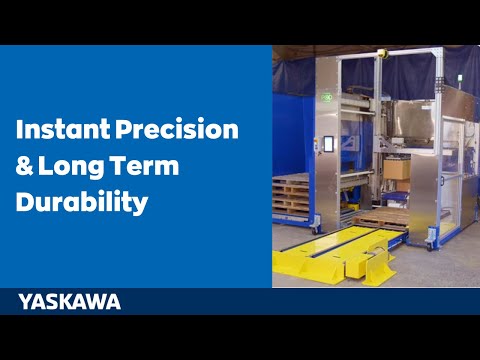What happens when automation students develop a machine to showcase the capabilities of servo technology? At Alexandria Technical College, Alexandria, MN (see packworld.com/go/C068), that combination resulted in a one-of-a-kind, hands-on educational experience and an attention-getting demonstration at Pack Expo. That’s according to Dr. Kenneth Ryan, director of the Manufacturing Automation Research at ATC’s Center for Automation and Motion Control (CAMC).
The 4’x5’x3½’-tall machine, which emulates a packaging machine, was unveiled November ’02 at Pack Expo in Chicago.
For this unique project Yaskawa Electric America, Inc. (Waukegan, IL) provided hardware, software, and technical expertise sufficient to build two identical, 6-axis linear motor demonstration units. The Yaskawa components include servomotors and drives, machine controller, and digital network. Yaskawa uses one of the demos to model its linear motor innovations, and Dr. Ryan will use the other to educate his students in the technology. Dr. Ryan places Yaskawa’s donation of hardware and technical assistance for the CAMC machine at $60ꯠ. Yaskawa senior regional motion engineer Michael Miller assisted the CAMC team.
Designed, built, and programmed by the students, the demo machine uses four axes of linear servomotors and two axes of rotary servomotors. “It was important for students to understand the interaction of the linear and rotary systems,” says Ryan. “We can teach about servomotors, but to actually program multi-axis servos—in this case six axes—in precise coordinated motion was a great learning experience.”
Four monitors in the Pack Expo booth displayed ladder logic, operator interface, and cam profile data as well as a live video feed providing real-time monitoring and diagnostics from the demo. This is part of a remote monitoring and management research project between CAMC and Yaskawa.
“We are very excited about this ability to gain direct high-speed Internet access to the MP920 controller,” says Ryan. “This has significant implications for machine builders needing to support machines distributed globally.”
The project was initiated and completed in rapid succession. Once they received the hardware from Yaskawa, CAMC personnel completed the project in six weeks—just two weeks prior to Pack Expo.
Three CAMC students with automation systems integration (ASI) certification developed the machine. “They did the networking and programming—they essentially built it,” says Ryan, “but this was a cooperative effort between different departments. Also involved were six students from the welding department and a machining student who crafted the end effectors.”
Educational payback
One of the benefits is that CAMC received state-of-the-art components that they otherwise would not have been able to afford, says Ryan, who helped launch the CAMC program five years ago.
“One of most critical defects in technical education has been ‘institutionalized obsolescence,’” Ryan says, referring to donations by companies of old and outdated equipment. Such donations have long been a foundation for hands-on experience in the classroom at many schools, he adds.
“What companies could afford to give us was what was no longer of value to them,” he explains. “If machinery builders want engineers or technicians who are five years behind the curve, then give us your tired, your useless machinery, and that’s what we’ll turn out. But if they want a technician that’s relevant and up to date, they should start thinking about education as a top recipient of the latest technology.”
The experience has been a good one for the students. To top things off, Ryan expects that all three ASI students will be hired upon graduation by local packaging machinery manufacturers. —RL






























